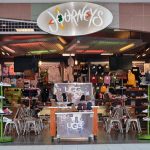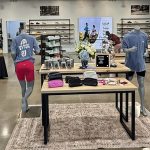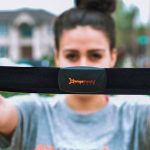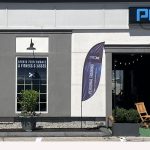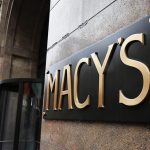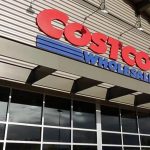adidas Group held their annual Investor Day on the Reebok campus last
week, putting their best face on a troubled U.S. business that has been
hurt by a weaker Reebok brand business and adidas own plans for
limiting sales in some key classic product like the Superstar to get it
under control in the market. Management appears to be taking a page out
of the Nike playbook as they look to limit distribution of key product
while expanding plans to better manage their own brand at retail.
In response to weakness in the U.S. retail market, adidas Group will
ramp up their owned-retail presence here. Currently, adidas operates
900 stores worldwide, including 144 concession stores, 474 concept
stores and 292 outlets. Sales for owned-retail stores are 16% of
total adidas brand volume, or about $1.3 billion. Sales for the
year are up 30% on mid-single-digit comps and 86 additional stores.
adidas suggested that their business from “controlled space” retail
(own stores, shop-in-shop and franchises) will exceed 30% of sales by
2010. Industry estimates are that Reebok currently does more than 25%
of U.S. sales in their own stores, but most of that is in the outlet
business. Management noted that they were late to web enabled
customization. adidas currently operates 4,000 stores in China and
expects to hit 7,000 by 2010.
Even though the business remains very challenged for both adidas and
Reebok in both the U.S. and the U.K., Group management insisted that
they will increase the Reebok business by 250 million in 2008 and that
the Group international business will grow 500 million in 2009.
Eastern Europe represents about 20% of EMEA sales. This region is
expected to double by 2010 and will represent 30% of sales. Latin
America remains the fastest growing region. Also, they claimed
synergies of 105 million in 2008 and an additional 175 million in
09. They had admitted they “had to do better in the U.S. to be a
true global brand”.
The corporate focus is clearly on righting the Reebok brand in the U.S.
as many a retailers favorite loss-leader. Initiatives to drive
running sales have not materialized and retailers appear to be
reluctant to let Reebok think outside the box.
While they do not expect any growth in the U.S. or the U.K. next year,
expectations are that backlogs in those two countries will finally turn
positive twelve months from now in anticipation of growth sometime in
2009. Management claims Reebok will grow net of those two
countries in 2007, mostly on apparel, which is virtually non-existent
in the U.S. now sans the NFL and NHL programs. They aim to
establish Reebok as a “credible niche player” in Europe.
Marketing remains the key initiative to turn around the Reebok
business. Admitting that the “Run Easy” campaign had been only
marginally successful and after abandoning the previously announced
“Best On, Best Off” campaign for back-to-school, the new marketing
theme is “your Move”, built around the concept of athletic
individuality. They have an updated “Reebok” logo as a key driver
to the 2009. The new tagline is “the Brand that Fits Me”.
Marketing now will be focused on running and women. Reebok will
spend between 10% to 11% of revenue on marketing in the next two
years.
Reebok reiterated that they will only do business with Foot Locker on
an at-once basis as liquidations have been poor and Foot Locker had to
rely on “heavy discounts” to move product. The brand was
obviously a key focus of the liquidation event at Foot Locker this
summer as the retailer moved to reduce inventories of slower-moving and
aged product. Reebok also continues to move away from the value
channel and looks to grow in full line sporting goods, which represent
about 17% of sales this year (up from 10% in 2005). The target is
25%. Expectations are to grow Reebok in the fashion “directional”
accounts as well.
Rockport currently does about 350 million in sales, and management
believes it has the potential to do 1 billion. The new
initiative with 1000 FL doors was termed “too early to tell” on results.
Brand adidas growth is focused on running, soccer, basketball, training
and Originals. Management claimed that running sales were up 30%
in Q2, citing 2 million pairs of Bounce product sold.
Erich Stamminger stated that basketball was the “key category to growth
in the U.S.,” an interesting goal since it is the most troubled
category in the mall these days, except for marquee goods. According to
retail point-of-sale data compiled by SportScanINFO, Nike owns more
than 86% of the basketball market in the sports retailer segment, while
adidas accounts for less than 5% of the total dollars sold
year-to-date. Reebok is third, with less than 4% share.
adidas announced they had “cleaned up the market” for iconic Originals
product by withdrawing them from the value channel, in hopes of
reversing the negative trends and weak sell through. adidas will create
a special line of Originals exclusively for the value channel.
adidas NBA product sales, which were moved from Reebok to adidas last
year after the acquisition of the Reebok business closed, are up 30% on
strong international sales. Management said 30% of the NBA
business is now done outside of the U.S. They stated that they
had sold 200,000 Beckham L.A. Galaxy jerseys.
Taylor Made-adidas Golf is growing in the single-digits in what was
termed a challenging golf market in the U.S. Management said the
introduction of square head drivers has had little impact as they only
have 6% share while TM has a high-teens share with two new
drivers. Total metalwoods share for TaylorMade was pegged at 30%,
the highest share position for the brand since March 2005. They
claimed adidas is #1 in golf apparel market share and #2 in golf
footwear.
These Investor Day events are designed to hype a companys
brands and the Group did a decent job for all the brands, but that
first lunch that Hainer had with Paul Fireman must haunt him
today

